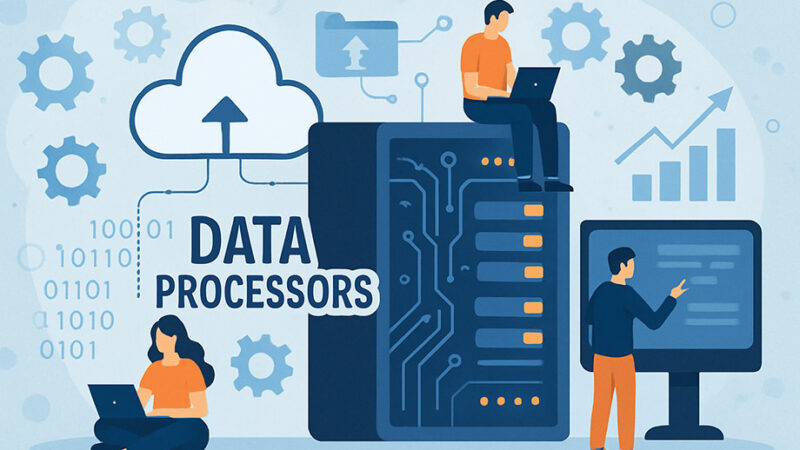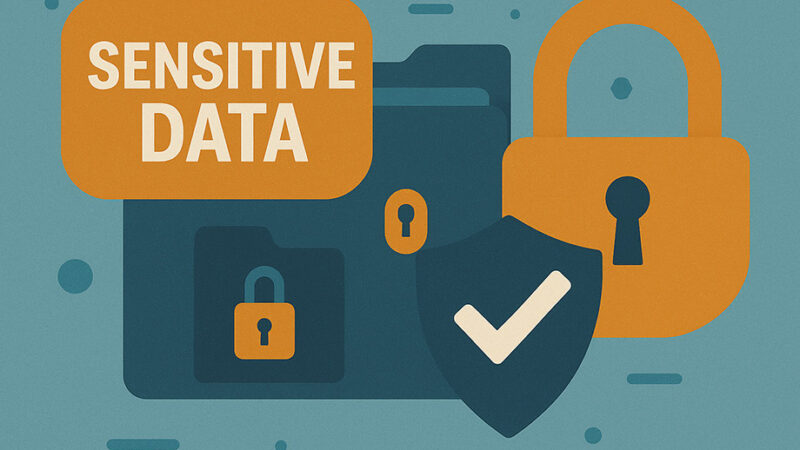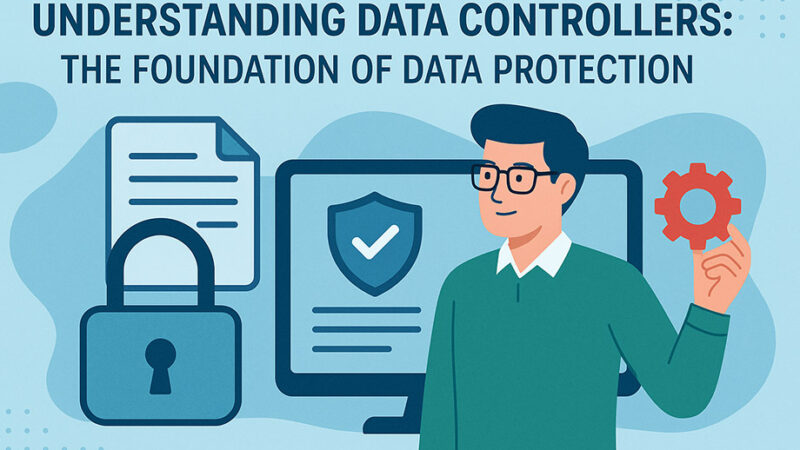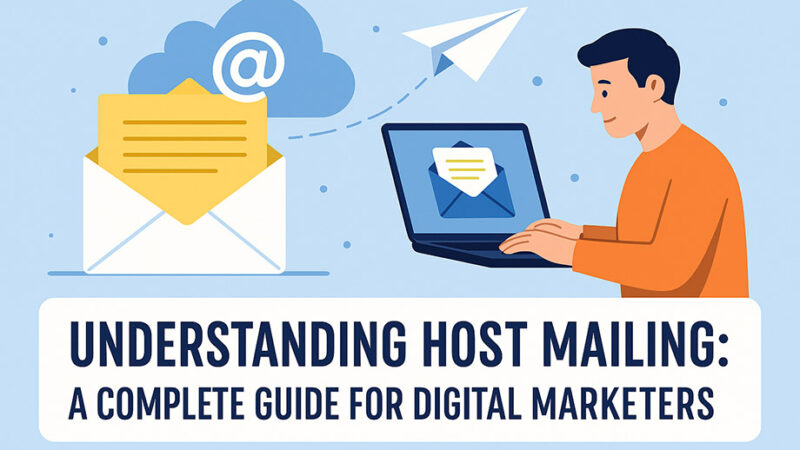Understanding Data Subjects: The People Behind the Data
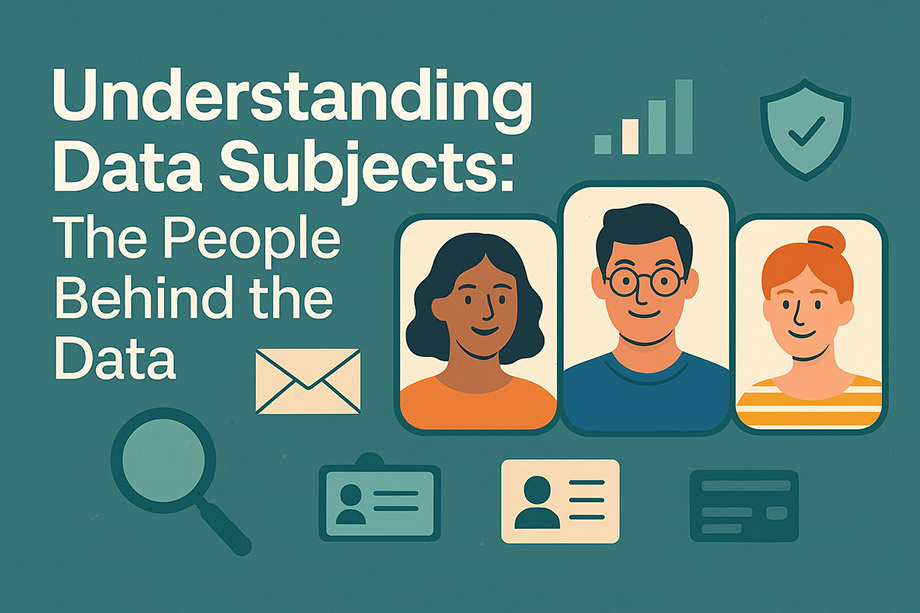
In the complex world of data protection and privacy law, it’s easy to get lost in technical terminology and legal frameworks. However, at the center of every data protection regulation lies a simple but profound truth: personal data belongs to real people. These individuals, known as Data Subjects, are the cornerstone of modern privacy law and the reason why data protection exists in the first place.
What is a Data Subject?
A Data Subject is a living individual to whom personal data relates. This straightforward definition encompasses every person whose information is collected, stored, processed, or shared by organizations around the world. Whether you’re a customer making an online purchase, an employee clocking into work, or simply a visitor browsing a website, you become a data subject the moment any organization processes information that can identify you.
The emphasis on “living individual” is crucial – data protection laws are designed to protect the privacy and rights of people who are alive and can exercise their rights. This distinction has important implications for how organizations handle information about deceased individuals, which is typically governed by different legal frameworks.
The Scope of Data Subject Identity
Who Qualifies as a Data Subject?
Customers and Clients: Anyone who purchases goods or services, creates accounts, or engages with businesses in any capacity becomes a data subject when their personal information is processed.
Employees and Job Applicants: Workers at all levels, from entry-level staff to executives, as well as job candidates, are data subjects regarding their employment-related information.
Website Visitors: Individuals browsing websites become data subjects when cookies are placed, IP addresses are logged, or any other identifying information is collected.
Patients and Service Users: People receiving healthcare, social services, or other personal services are data subjects regarding their service-related information.
Students and Educational Participants: Learners in educational institutions, training programs, or online courses are data subjects regarding their educational records and activities.
General Public: In some cases, individuals may become data subjects through public activities, surveillance systems, or when their information is collected from public sources.
Age Considerations
While the definition specifies “living individual,” data protection laws often include special provisions for children. Many jurisdictions provide enhanced protections for minors, recognizing their particular vulnerability and limited capacity to understand the implications of data processing. Organizations must often obtain parental consent for processing children’s data and implement additional safeguards.
Types of Personal Data Related to Data Subjects
Understanding what constitutes personal data is essential for recognizing when someone becomes a data subject:
Direct Identifiers
- Full names and aliases
- Government identification numbers (Social Security, passport numbers)
- Email addresses and phone numbers
- Physical addresses
- Photographs and biometric data
Indirect Identifiers
- IP addresses and device identifiers
- Location data and GPS coordinates
- Online usernames and account identifiers
- Customer reference numbers
- Combination of characteristics that could identify an individual
Sensitive Personal Data
- Health and medical information
- Racial or ethnic origin
- Religious or philosophical beliefs
- Political opinions and affiliations
- Trade union membership
- Genetic and biometric data
- Sexual orientation and sex life
- Criminal convictions and offenses
Fundamental Rights of Data Subjects
Data protection laws grant data subjects numerous rights designed to give them control over their personal information:
Right to be Informed
Data subjects have the right to know what personal data is being collected about them, why it’s being processed, how long it will be retained, and who it might be shared with. This information must be provided in clear, understandable language through privacy notices and policies.
Right of Access
Individuals can request copies of all personal data an organization holds about them. This includes not just the data itself, but also information about how it’s being used, where it came from, and who it’s been shared with. Organizations typically have 30 days to respond to such requests.
Right to Rectification
When personal data is inaccurate or incomplete, data subjects have the right to have it corrected or completed. This ensures that decisions affecting individuals are based on accurate information.
Right to Erasure (Right to be Forgotten)
In certain circumstances, data subjects can request that their personal data be deleted. This might apply when the data is no longer necessary for its original purpose, consent is withdrawn, or the data has been unlawfully processed.
Right to Restrict Processing
Data subjects can request that organizations limit how they use personal data in specific situations, such as when the accuracy of the data is contested or while a legal claim is being resolved.
Right to Data Portability
For certain types of automated processing, data subjects can request their personal data in a structured, machine-readable format that allows them to transfer it to another organization.
Right to Object
Individuals can object to processing based on legitimate interests, direct marketing, or processing for research and statistical purposes. Organizations must stop processing unless they can demonstrate compelling legitimate grounds.
Rights Related to Automated Decision-Making
Data subjects have rights regarding automated decision-making, including profiling, that produces legal effects or significantly affects them. They can request human intervention, express their point of view, and contest the decision.
Data Subject Consent and Communication
Meaningful Consent
When consent is the legal basis for processing, it must be freely given, specific, informed, and unambiguous. Data subjects must understand exactly what they’re consenting to, and consent must be as easy to withdraw as it is to give.
Clear Communication
Organizations must communicate with data subjects in language that is clear, plain, and appropriate for the audience. Legal jargon should be avoided, and information should be presented in accessible formats.
Transparency Requirements
Data subjects must be informed about their rights and how to exercise them. This includes providing clear contact information for privacy inquiries and explaining the process for making requests.
Vulnerable Data Subjects
Certain groups of data subjects require special protection due to their particular circumstances:
Children and Minors
Young people may not fully understand the implications of sharing personal data or the long-term consequences of data processing. Many jurisdictions require parental consent for processing children’s data and mandate additional safeguards.
Elderly Individuals
Older adults may be less familiar with digital technologies and more susceptible to privacy violations or scams involving their personal data.
Individuals with Disabilities
People with cognitive, physical, or sensory disabilities may need accommodations to understand their privacy rights and exercise them effectively.
Economically Disadvantaged Individuals
People with limited resources may have fewer options for protecting their privacy and may be more vulnerable to exploitative data practices.
Data Subject Rights in Practice
Making Rights Requests
Data subjects can typically exercise their rights by:
- Contacting the organization’s privacy officer or designated contact
- Using online forms or portals provided by the organization
- Sending written requests via email or postal mail
- In some cases, making verbal requests
Verification Processes
Organizations must verify the identity of individuals making rights requests to prevent unauthorized access to personal data. However, these verification processes must be proportionate and not create unnecessary barriers.
Response Timeframes
Most data protection laws require organizations to respond to data subject requests within specific timeframes, typically 30 days, though extensions may be possible in complex cases.
Free of Charge
Generally, organizations cannot charge fees for processing data subject rights requests, although fees may be applied for manifestly unfounded or excessive requests.
Challenges in Data Subject Rights Management
Identification Challenges
Determining whether someone is a data subject can be complex, particularly when dealing with:
- Pseudonymized or anonymized data
- Data collected indirectly from third parties
- Historical data with unclear origins
- Shared or family accounts
Technical Implementation
Organizations face technical challenges in:
- Locating all data related to a specific individual across multiple systems
- Ensuring complete data deletion while maintaining system integrity
- Implementing automated tools for rights request processing
- Maintaining audit trails of rights request handling
Balancing Rights and Interests
Organizations must balance data subject rights with:
- Other individuals’ privacy rights
- Legal obligations to retain certain data
- Legitimate business interests
- Public interest considerations
Global Variations in Data Subject Rights
While the concept of data subjects is universal in privacy law, specific rights and protections vary by jurisdiction:
European Union (GDPR)
Provides comprehensive rights including the right to data portability and specific protections for children’s data.
United States
State laws like the California Consumer Privacy Act (CCPA) grant rights to residents, with variations in scope and implementation.
Other Jurisdictions
Countries worldwide are implementing data protection laws with their own approaches to data subject rights, creating a complex global landscape.
Best Practices for Organizations
Respect and Recognition
Organizations should recognize that behind every piece of personal data is a real person with legitimate privacy interests and concerns.
Proactive Communication
Rather than waiting for requests, organizations should proactively inform data subjects about their rights and provide easy ways to exercise them.
User-Friendly Processes
Rights request processes should be accessible, straightforward, and designed with the data subject’s experience in mind.
Regular Training
Staff should be trained to recognize and respond appropriately to data subject inquiries and requests.
Technology Solutions
Invest in systems and tools that facilitate efficient and accurate responses to data subject rights requests.
The Future of Data Subject Rights
As technology continues to evolve, new challenges and opportunities emerge for data subject rights:
Artificial Intelligence and Machine Learning
As AI systems become more prevalent, data subjects may need enhanced rights regarding automated decision-making and algorithmic transparency.
Internet of Things (IoT)
The proliferation of connected devices creates new categories of data subjects and new challenges for rights exercise.
Biometric Technologies
The increasing use of biometric data requires special consideration of data subject rights and protections.
Blockchain and Distributed Systems
These technologies present unique challenges for implementing data subject rights, particularly the right to erasure.
Conclusion
The concept of the data subject reminds us that data protection is fundamentally about people. Every privacy policy, every security measure, and every compliance program exists to protect the rights and interests of living individuals whose personal information flows through our digital systems.
Understanding data subjects isn’t just about legal compliance – it’s about recognizing the human dignity and autonomy that underlies all privacy rights. When organizations truly embrace this perspective, they build stronger relationships with the people they serve and create more ethical, sustainable approaches to data processing.
As we navigate an increasingly connected world, the rights and interests of data subjects must remain at the center of how we think about personal data. By respecting these individuals and their rights, we contribute to a digital ecosystem that serves humanity rather than exploiting it.
The data subject is not just a legal concept – they are our customers, our employees, our family members, and ourselves. In protecting their rights, we protect the foundation of trust that makes our digital society possible.


